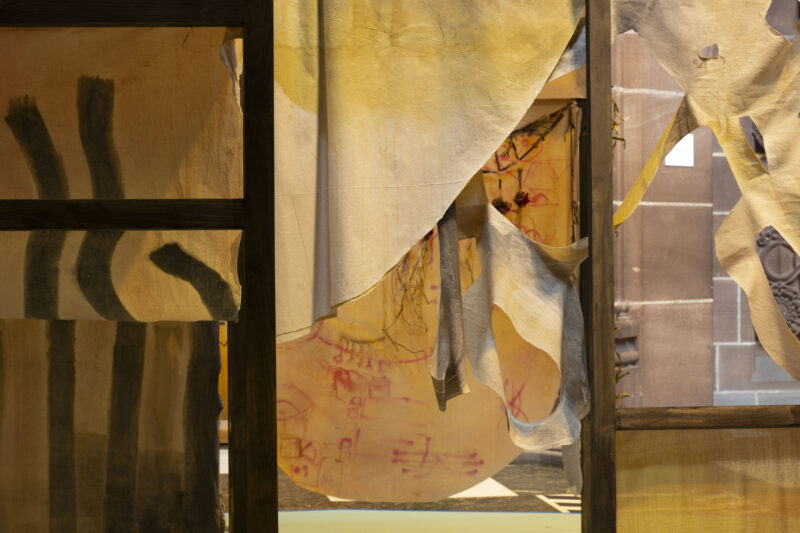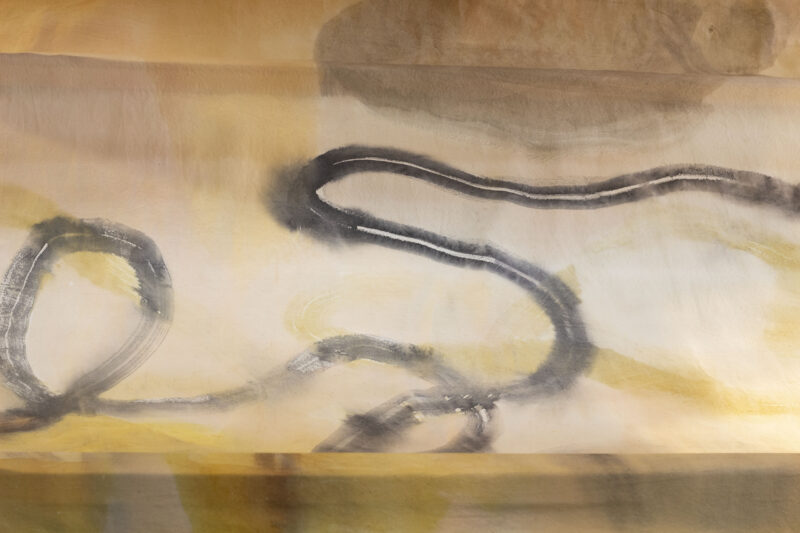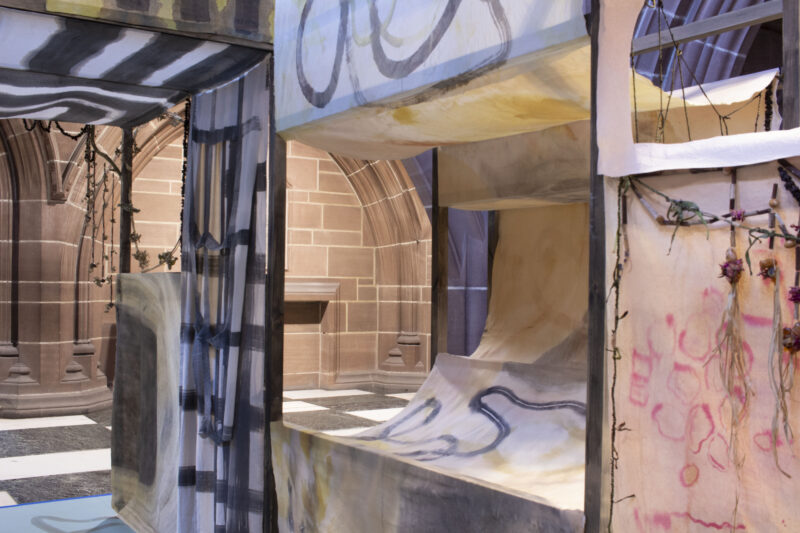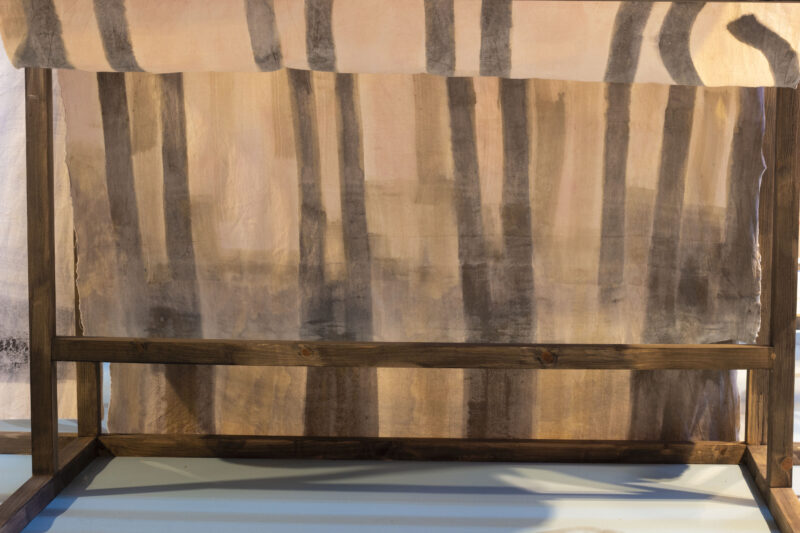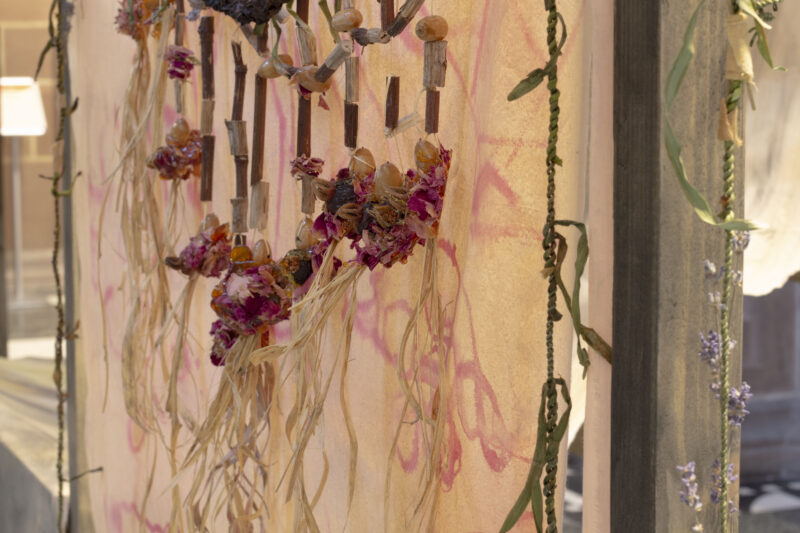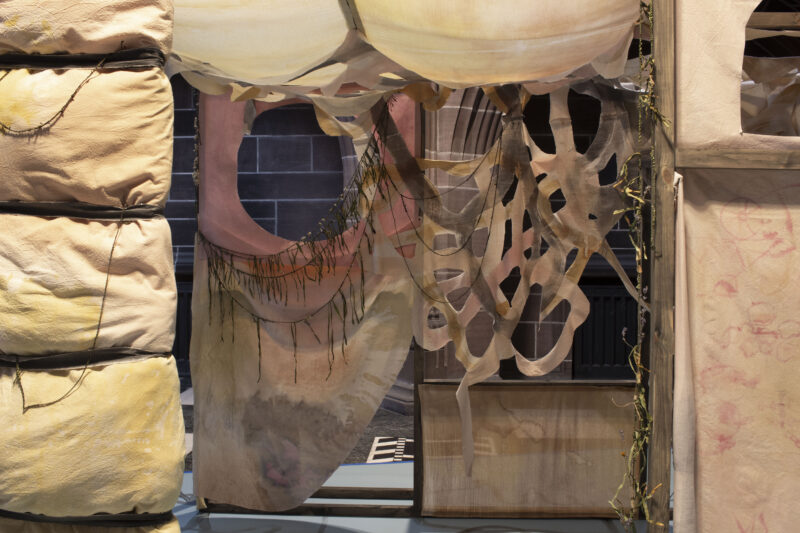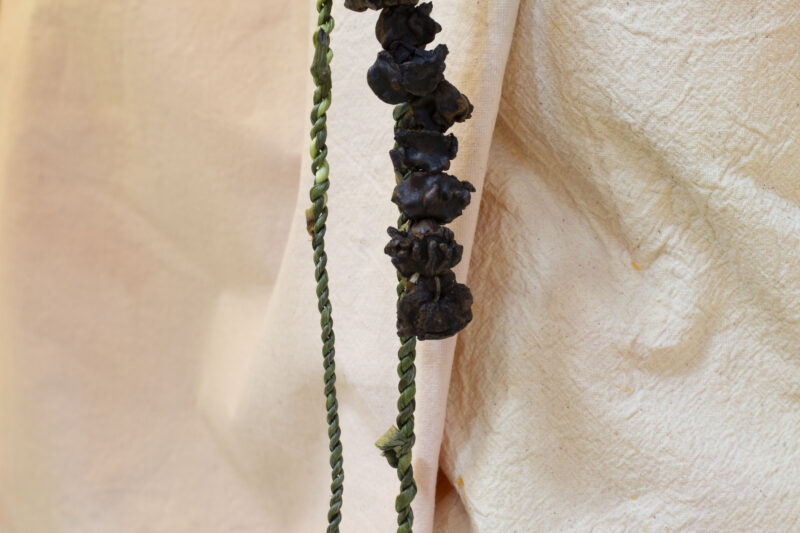
The Host and the Symbiont
Commissioned by Liverpool Cathedral exhibited as part Of Infinite Encounters
May 10th to June 2nd, 2024
The sculpture for the Lady Chapel at Liverpool Cathedral was conceived to serve multiple functions, aiming to address the potential overwhelm often experienced in public spaces while also embodying elements of the natural world. Inspired by my personal experiences as a neurodivergent individual, I sought to create a protective barrier within the cathedral, offering visitors a respite from sensory overload.
Designed with numerous windows, the sculpture allows viewers to engage with their surroundings gradually, avoiding the need to take in everything all at once. Symbolically, the structure serves as a representation of the harmonious coexistence found in the natural world, akin to an oak tree historically associated with strength and communal gathering in England.
The flooring of the sculpture symbolises the Earth and the intricate mycelial networks that connect trees and plants, facilitating communication and nutrient exchange. Inhabiting the structure are various elements, many possessing medicinal properties traditionally used by and for women. Paintings on fabrics adorn the sculpture, created using natural inks derived from local plants such as St. John’s Wort, known for its therapeutic effects in treating mild depression and nerve pain. Ladies Mantle, valued for its role in regulating menstrual cycles and supporting women’s health, is also featured prominently, alongside Yarrow, traditionally used to staunch blood and aid wound healing.
Additionally, the sculpture incorporates the Oak Gall Wasp as a central motif. Knopper galls, produced by these wasps, serve as a source of ink for the artwork. These galls, appearing in the UK in the 1960s, undergo a remarkable transformation, guided by the actions of the wasps’ larvae, resulting in unique and wondrous structures. Collected from Childwall woods, these galls yield a magical brown ink upon gentle heating, symbolising themes of transition, symbiosis, acceptance, and kinship.
The central part of the structure mirrors the transformative effects of the gall wasp, symbolising the inherent mutability of nature. Ultimately, the sculpture serves as a reflection of humanity’s interconnectedness with the natural world, emphasising the importance of understanding and respecting our impact on the environment. By drawing parallels between biodiversity and our treatment of nature and each other, the artwork invites contemplation on the positive aspects of difference and transformation, particularly in the context of neurodivergence and life transitions like menopause.

